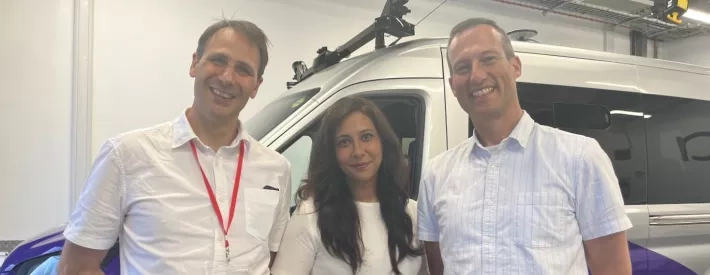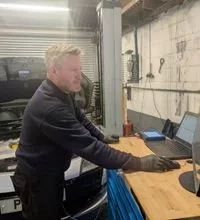What’s it like behind the wheel of an AV?

Leading the way on transparency in self-driving, in August, autonomous vehicle software firm Oxa invited independent road safety campaigner and trustee of Brake, Meera Naran MBE, for a test ride.
The car, an Oxa-modified Ford Mondeo with multiple cameras, lidar, radar, and a ROSPA gold standard safety driver behind the wheel, seamlessly navigated a 20-minute route on public roads around Oxford – junctions, roundabouts, pedestrian crossings and all.
“My self-driving experience was, if anything, unremarkable,” said Naran. “It was everything it should be. No drama. No sensational headline. Just sensible. As most know, I am a huge advocate of technology and perhaps the most critical too, but I was humbled by the time given and the opportunity for debate.”
For those that don’t know, Naran has campaigned vehemently for the mandatory fitting of Autonomous Emergency Braking (AEB) on new vehicles since her 8-year-old son, Dev, was killed in a collision on a smart motorway in 2018.
Back at Oxa HQ, the roundtable discussion featured Chief Road Safety Adviser to National Highways, Dr Nick Reed, and senior representatives of Oxa including Director of Safety Assurance, Camilla Fowler, and co-founder and CTO, Professor Paul Newman.
“Self-driving cars must be at least as safe as a good human driver, that’s enshrined in the Automated Vehicles Act, so we need a mechanism to hold them to account,” said Reed.
“We think it is much smarter to assure a certain vehicle for a particular route, rather than claiming ‘We can drive everywhere’,” said Newman. “From nowhere to everywhere overnight? That sounds like a stretch. Autonomy should run first where it fits best, and you get to ‘everywhere’ by doing lots of ‘somewheres’.
“Be open; admit that sometimes the technology will get it wrong, and design it to fail safely. Incidents like we saw with Cruise in San Francisco last year deserve an honest explanation. That's why we have Oxa YellowBird, which independently monitors our Oxa Driver software to ensure driving remains careful and competent at all times.”
Fowler explained that the term has appeared in Road Safety Acts since the 1980s. “There is some case law, but it has always been hugely subjective,” she said. “Now, thanks to Labour and peer amendments ensuring its inclusion in the AV Act, we get to define what ‘careful and competent’ actually means for self-driving vehicles. This could deliver a step-change in road safety.”
In-use monitoring, as stipulated by the Act, has many benefits. Not just blackbox recordings for crash investigation, but also in detecting and learning from near-miss events – incidents that might still trigger the grounding of a fleet.
For example, the Highway Code says cars overtaking cyclists should leave a 1.5m gap, but sometimes it might be essential for the vehicle to breach that. In such cases, the operator must provide data to explain why it made that decision.
Oxa is making the case for increased mandatory data sharing to the UK government and at UNECE level. “There’s no intellectual property in the YellowBird output, but we will happily share data to demonstrate how and why events unfolded,” said Newman. “That has to be the price of entry to operate in this space. The safety bar has to be high. That’s what the public expect.”
Following a first sight of Oxa’s new E-Transit Minibus at nearby Culham Science Centre, part of the CAM Testbed UK network, Naran concluded: “I see value in the potential of self-driving. It means that, in 20 years’ time, my daughter, who is four, is going to be safer.
“I was encouraged by the pragmatic language used. Ninety percent of the conversation focused on what the technology cannot do. No grandiose claims. No exaggerated statements.
“While the day only left me with more questions around systems thinking, ethical considerations and user acceptance, the experience also reinforced the need for a Road Safety Strategy – a pivotal report that will lay the foundation towards the future of self-driving vehicles.”




